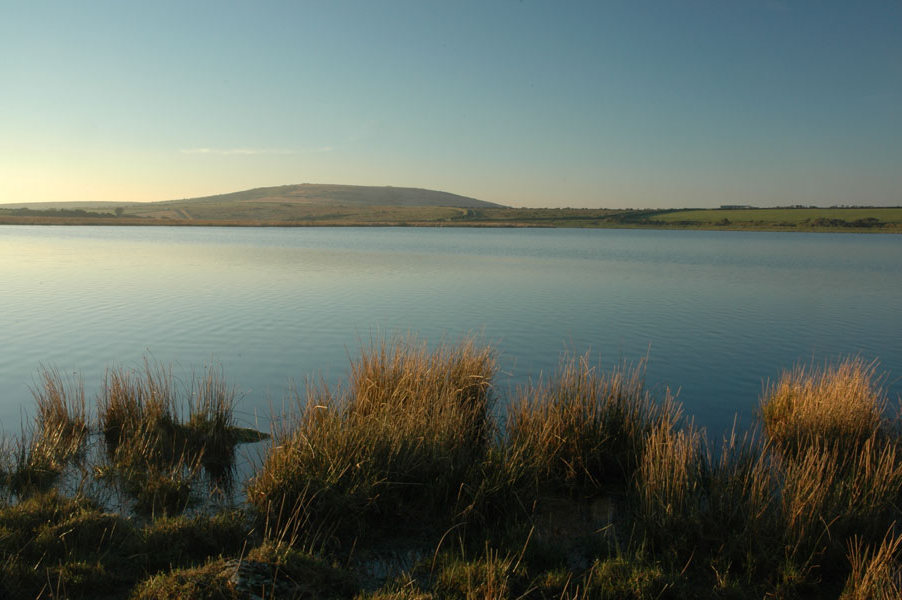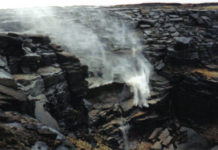The dream of Camelot, the golden city where peace and harmony reign, first gripped the popular imagination in the Middle Ages when war and disease were rife. The desire to believe in the existence of this ideal city has inspired a search for a real place that can be identified as Camelot. The mythical realm of Arthurian legend has kept people enthralled for nine centuries. At its heart lies Camelot, the towered city where King Arthur held court and where he and his knights lived by the codes of chivalry and courtly love.
King Arthur was first mentioned in a tenth century Welsh poem. Various elements were added to the legend – courtly love by Chretien de Troyes, the Holy Grail by Robert de Boron – but it was Sir Thomas Malory who pulled the story together.

Malory’s Arthur is in the heroic tradition, fighting against odds to win his kingdom. Raised by the magician Merlin, as a young man he showed himself to be the true heir to the throne by pulling a sword out of a stone, a deed no one else could perform. Once he had secured his kingdom, Arthur was given the enchanted sword Excalibur by the Lady of the Lake. He then married Lady Guinevere, receiving the Round Table as part of her dowry, and established his court at Camelot.
This oak table, now on display in Winchester Castle, was once believed to be Arthur’s Round Table, but it has proved to be medieval. The importance of the Round Table lay in the fact that when the knights sat there they were all equal in position, and so it became a symbol of unity.

The knights underwent tests of valour culminating in the search for the Holy Grail. However, Arthur’s downfall was finally brought about by the love for Guinevere of the greatest knight of all, Sir Lancelot. Harmony could not be maintained and the king’s nephew, Mordred, tried to seize power. Arthur and Mordred met in battle at Camlan where both were destroyed – and with them the kingdom of Camelot.
One popular legend holds that Arthur is not dead but asleep. The location of his resting chamber is thought by some to be under the Eildon Hills in the Scottish Borders.

The name ‘camelot’ was coined by the 12th-century French poet Chretien de Troyes. Inspired by troubadours at Eleanor of Aquitaine’s court, he had introduced into Arthur’s story the theme of courtly love, whereby a lady could become the object of devotion of an honourable knight who would dedicate himself to her. This provided the knights with motives for their chivalrous deeds and gave the story immediate appeal to ladies.
Chretien’s Camelot lay in a timeless land of enchanted forests and castles where marvels and magic abounded. From here the knights set out on their quests, rescuing damsels in distress, risking physical and supernatural perils and eventually returning home to Camelot. The epitome of stability in an unpredictable universe, Camelot symbolized civilization versus barbarism, order amid chaos, a golden future and a glorious past.
The story of Camelot begins and ends with Arthur. There is some evidence that behind the legendary king lay a real person, a fifth-century British warlord who kept the Germanic tribes at bay following the departure of the Romans. After the Saxon conquest, tales of this warlord became part of Celtic folklore, passed down through the generations among those who lived in the west of England, Wales and Brittany, beyond the Saxon reach. The search for Camelot thus began in the lands of the Celts.
The historian Geoffrey of Monmouth first popularized Arthur in the 12th century. In his account of the king he placed Arthur’s court at Caerleon in South Wales, the site of an important Roman fortress and amphitheatre. In Geoffrey’s time, the remains of a once magnificent city were still visible, so it seems appropriate that he should have set his story there. Caerleon lies on the River Usk, which could have transported kings and queens to Arthur’s city of golden palaces.
Cadbury Castle at South Cadbury in Somerset is the most probable location of Camelot. Here, during the period when Arthur is supposed to have lived, was the largest of known British strongholds, the headquarters of a king who could marshal resources unmatched by anyone else. The first to identify Cadbury with Camelot was John Leland, antiquarian to King Henry VIII, who wrote in the 1540s: “At the very south end of the church of South-Cadbury standeth Camallate, sometime a famous town or castle….”

There is some archaeological evidence to back Leland’s claim. In the 1960s, excavations led by archaeologist Leslie Alcock found that the Iron Age fort of south Cadbury had been reoccupied and strengthened at the end of the fifth century, when Arthur may well have been active. The fort had been built in the first century BC, then stormed by the Romans in AD 83 and left unoccupied for 400 years before its reconstruction. Only a few traces of the timber buildings remain, including a hall 63ft (19m) long. Could this have been where the Round Table once stood?
Another claimant with a strong suit is Tintagel Castle on the north coast of Cornwall, supposedly Arthur’s birth place. A castle has stood here since 1145, which is far too recent to be Camelot. But excavations have revealed that a Celtic monastery once occupied the site, and shards of pottery found here indicate that it was inhabited in the fifth century. Whatever the link between Camelot and Tintangel, its reputed Arthurian connection still draws the tourists.

The story of King Arthur best known today appeared in 1485 in Le Morte d’Arthur by Sir Thomas Malory, who identified Camelot with Winchester simply because this had been the Saxon capital from 849 to 1066. Another tradition holds that Arthur lived in the north of Britain, in a kingdom called Dalriada (now Argyll), and that the site of the battle of Camlan (Arthur’s last battle) was Camboglanna, a Roman fort on Hadrian’s Wall.
After the battle of Camlan, King Arthur was carried dying from the battlefield by Sir Bedevere. Legend relates that the knight took the king to a lake, where Arthur ordered him to throw the magical sword Excalibur into the water. In a 14th century Dutch manuscript the Lady of the Lake holds aloft the sword. The lake is reputed to be Dozmary Pool in Cornwall.

The story may have had its roots in prehistoric religious beliefs. It is thought that Bronze Age man may have appeased the river gods in a ritual which involved ‘burying’ weapons of war in lakes and rivers.
If there is no certainty about the location of Camelot, then that is most probably because it existed, like its ruler, only in the imagination of the story-tellers. If it were based on a real location, Cadbury Castle seems to be the most plausible. But Camelot’s true appeal lies in what represents – a place where honour and courage prevailed, where the strong protected the weak, and where harmony reigned. The poet Tennyson aptly wrote of Camelot: “Lord, there is no such city anywhere, but all a vision”
-end-




































